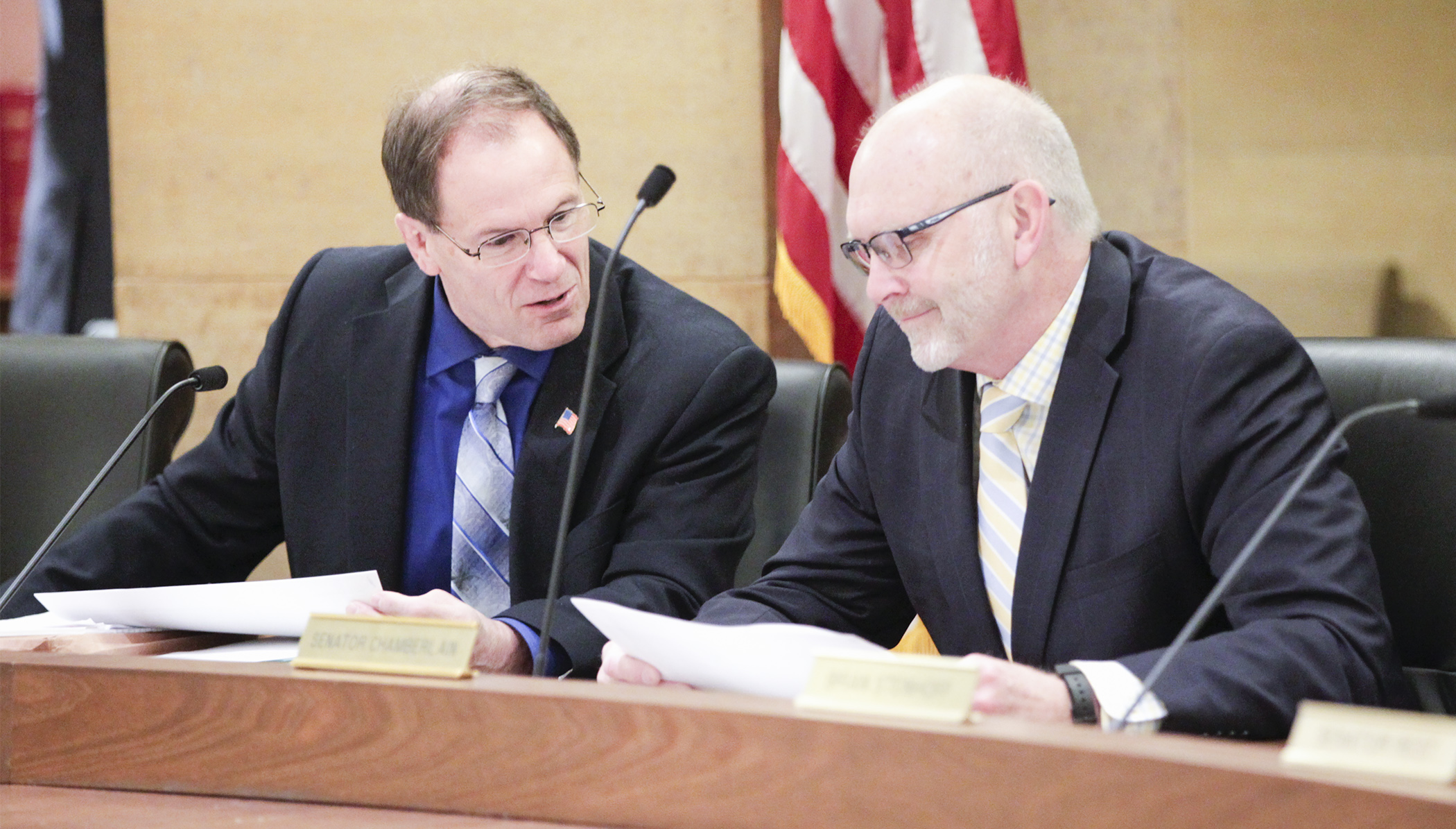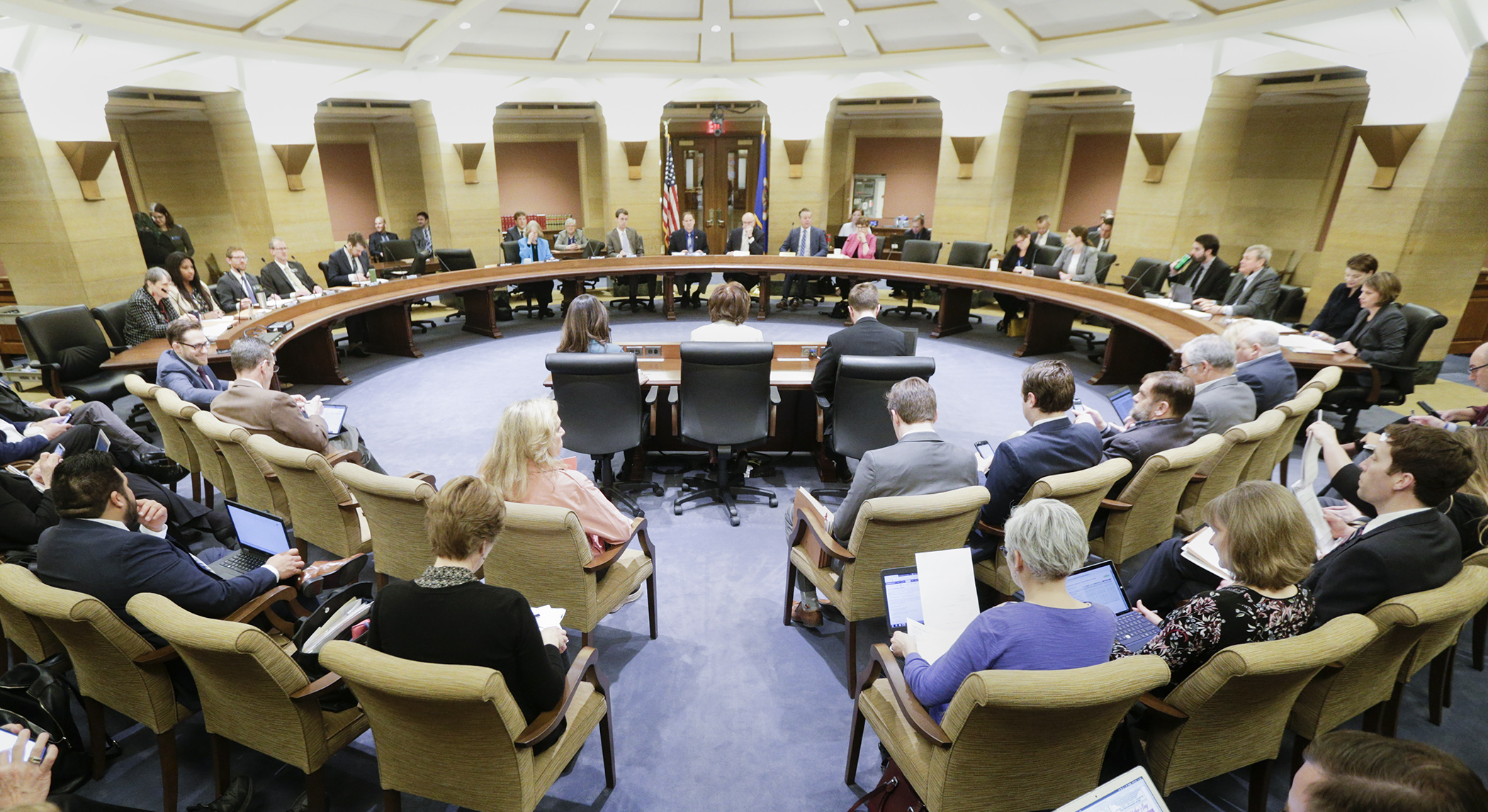What’s the difference? It’s a big one in House and Senate tax proposals

Is the state fiscally sound enough to lower tax revenues by $10 million in the next biennium? Or should the coffers be beefed up by over $1 billion in order to increase funding in state programs?
The answer will probably land somewhere in between, and working toward a compromise is the task of the taxes conference committee that met for the first time Friday. While Senate Republicans were absent save for the co-chair, Sen. Roger Chamberlain (R-Lino Lakes) – who objected to the short notice given Senate members – those present were offered a walk-through by House and Senate fiscal staff of how the omnibus tax bills passed by the two chambers differ in their effect upon the General Fund.
The bottom line? For fiscal 2020-21, the House bill would add $1.19 billion to the General Fund, while the Senate would decrease it by about $10 million. So $1.2 billion is the gap that needs to be bridged.
[MORE – View a spreadsheet comparing the proposals]
The tax committees in both chambers went into the session stating one of their top priorities to be conformity with the federal Tax Cuts and Jobs Act passed in late 2017. The two bills demonstrate disparate approaches to that, with a significant difference in the category of “non-business individual income tax provisions.”
This is where the House wants to give money back to tax filers to the tune of $107 million in fiscal 2020-21, while the Senate intends to raise revenues in that category to a total of $165.8 million. So the two chambers are about $273 million apart.
 Members of the House-Senate conference committee on HF2125, the omnibus tax bill, listen as staff goes through differences in the House and Senate versions of the bill. Photo by Paul Battaglia
Members of the House-Senate conference committee on HF2125, the omnibus tax bill, listen as staff goes through differences in the House and Senate versions of the bill. Photo by Paul BattagliaEven more pronounced are the differences in how the House and Senate approach corporate franchise taxes. Thanks primarily to House plans to repatriate foreign income to the state and exercise the GILTI provisions the federal government has made available to states (that stands for “Global Intangible Low Tax Income”), House provisions would collect $680.1 million more than the Senate.
So what’s the net effect of conformity measures? With the Senate increasing revenue from individuals and the House more from corporations, the House comes out collecting $380.7 million more.
Then there are those “Other individual income tax provisions,” which account for the biggest difference of all. The Senate proposes reducing the second-bracket tax rate from 7.05 percent to 6.8 percent for tax year 2019, which would reduce revenues by $378.8 million. Meanwhile, the House would impose a 3 percent tax on capital gains and dividend income over $500,000. It’s estimated that this would increase revenues by $381.1 million.
The House would also expand eligibility for the Working Family Credit, resulting in $81.6 million being returned to taxpayers. Both bills would increase the Social Security subtraction, the Senate to the tune of $42.9 million, the House $22.9 million.
So how do these “other provisions” affect the General Fund? The House bill would increase them by $185.8 million, while the Senate’s provisions would reduce revenue by about $453 million. That’s a net difference of $638.7 million.
Here are other areas in which gaps must be bridged for fiscal year 2020-21:
Property taxes: The Senate would reduce the statewide levy amount on commercial-industrial and seasonal residential recreational property -- resulting in $77.5 million less in revenue -- while the House would have the state gain $55.5 million by freezing the commercial-industrial tax rate at 2019 levels.
Property tax aids and credits: The House bill offers $132.95 million more than the Senate bill.
Sales taxes: The Senate would reduce sales tax revenue by $31.6 million, the House would raise $10.8 million, a difference of $42.4 million.
Lawful gambling taxes: The Senate would institute a rate reduction for net receipts, lowering state revenues by $20 million.
Estate taxes: The House would freeze the estate tax exclusion at $2.7 million for the heirs of those who die in 2020, resulting in an estimated $9.9 million in increased revenue.
But there are several areas in which the bills are relatively close, such as conformity provisions related to “pass-through” businesses (i.e. sole proprietorships and partnerships), interaction with property tax refunds, and the Disaster Tax Relief Act.
The conference committee is next scheduled to meet at 9 a.m. Monday to begin hashing out the differences.
Related Articles
Search Session Daily
Advanced Search OptionsPriority Dailies
Ways and Means Committee OKs proposed $512 million supplemental budget on party-line vote
By Mike Cook Meeting more needs or fiscal irresponsibility is one way to sum up the differences among the two parties on a supplemental spending package a year after a $72 billion state budg...
Meeting more needs or fiscal irresponsibility is one way to sum up the differences among the two parties on a supplemental spending package a year after a $72 billion state budg...
Minnesota’s projected budget surplus balloons to $3.7 billion, but fiscal pressure still looms
By Rob Hubbard Just as Minnesota has experienced a warmer winter than usual, so has the state’s budget outlook warmed over the past few months.
On Thursday, Minnesota Management and Budget...
Just as Minnesota has experienced a warmer winter than usual, so has the state’s budget outlook warmed over the past few months.
On Thursday, Minnesota Management and Budget...